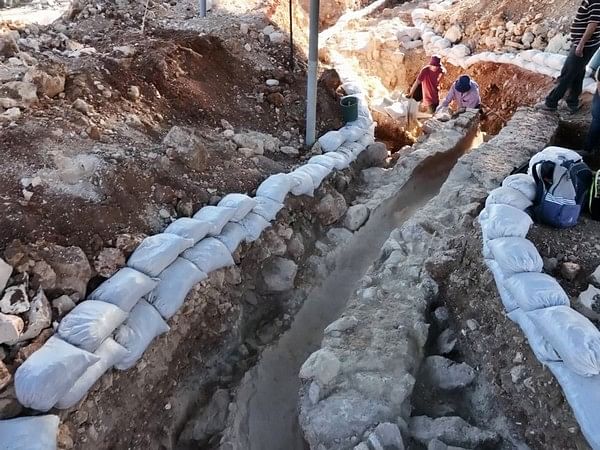Tel Aviv [Israel], August 29 (ANI/TPS): Archaeologists uncovered a 300-meter portion of a Second Temple period aqueduct in Tel Aviv, the longest such continuous stretch ever found in the city, the Israeli Antiquities Authority announced on Monday.
The waterway was discovered the southern Tel Aviv neighbourhood of Givat HaMatos ahead of a planned neighbourhood expansion.
“The aqueducts for Jerusalem tell the story of the city,” said Antiquities Authority director Eli Eskosido. “Their construction required huge budgets, extensive engineering knowledge and daily operation. They bear witness to the glory days of the Temple, to the destruction of the city and its construction after the destruction of the Temple and in the days of Aelia Capitolina – as an idol city.”
Excavation managers Dr Ofer Shion and Rotam Cohen explained that the waterway was built to bring water from further away because Jerusalem’s primary water source, the Gihon spring, couldn’t meet the needs of the growing number of residents and pilgrims.
They said that the Hasmoneans King Herod built two elaborate aqueducts for Jerusalem, which were among the largest and most complex waterworks in the land of Israel. The system concentrated spring water in the Bethlehem area and transferred it to Jerusalem by taking advantage of topography, the laws of gravity and large pools.
The aqueduct known as the “Upper Aqueduct” brought water to the Upper City — the area of the Old City’s current Jewish and Armenian Quarters. Meanwhile, the so-called “Lower Aqueduct” transferred water directly to the Temple.
According to Dr Shion and Cohen, the Upper Aqueduct remained in use, even after the Romans destroyed the Second Temple in 70 CE.
The Roman 10th Legion “carried out extensive renovations in it, and raised the ancient level by half a meter,” they said. “We found about 25 coins, scattered at relatively equal distances. In our opinion, this is not a coincidence: just like the practice today, the coins were placed there for good luck.”
Jerusalem Mayor Moshe Lion said that the Givat HaMatos development plans would be adjusted to work around the new discovery.
“Jerusalem is the city whose past and future are intertwined. The Municipality of Jerusalem is happy to discover that during the construction of three schools on Givat HaMatos, which will contribute to the education of the future generation, we received a greeting from the past – an aqueduct from the time of the Second Temple,” Lion said.
“The development boom that will contribute to the future of Jerusalem also requires the preservation of its glorious past. Therefore, we agreed with the Antiquities Authority that the planning will be done in full coordination and with complete consideration of the preservation of the aqueduct that will be integrated into the project.” (ANI/TPS)
This report is auto-generated from ANI news service. ThePrint holds no responsibility for its content.



